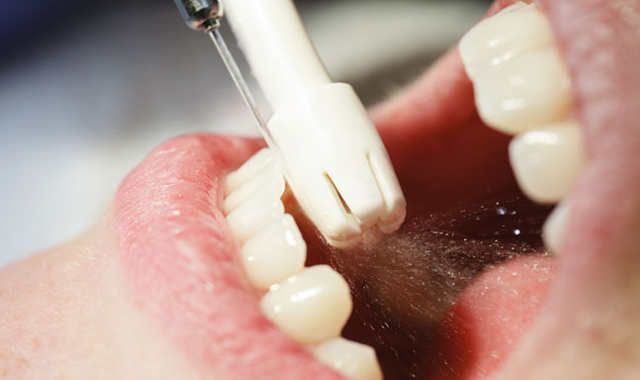The WORST infection control breach stories
Learn how you can keep your practice from becoming a news story.
The damage resulting from an infection control breach can affect the dental practice in tangible and intangible ways. Stiff fines and penalties can be imposed; patients and staff run the risk of serious illness; and if the infraction is severe enough, the practice may find itself on the evening news.

Trending article: 5 tips for infection control precautions during flu season
Unfortunately, there are several practices that made headlines as a result of their poor infection control practices. Learning the lessons that they didn’t can keep other practices out of the spotlight.
Click through the slides to find out the top three worst infection control breach stories.


Constant vigilance – New Mexico, 2001
If proper infection prevention precautions aren’t observed – every single time – patients and staff are at risk. In 2001, a case of hepatitis B in one patient was traced to another patient. Their only connection was sharing the same oral surgeon.
Most hepatitis B infections stem from high-risk behaviors – sex with an infected partner or sharing dirty needles. However, another transmission form is contact with blood from needlesticks or other sharp instruments.
In one such case, a 60-year-old, non-sexually active, non-intravenous drug user who had no contact with anyone with hepatitis B did, in fact, contract the disease when she went to an oral surgeon for routine tooth extraction. The case was traced back to another patient who had been there less than three hours before for a similar procedure.
More from the author: The dangers of microbial resistance in the dental practice
Transmission, in this case, was less obvious. The oral surgeon’s office was very meticulous in its infection prevention protocols. However, investigators concluded that there must have been a lapse in cleanup procedures after the source patient, leaving some contaminated blood exposed.
“It was a transmission from one patient to another patient of hepatitis B, and they discovered that with actual DNA markers,” says Peggy Spitzer, a dental hygienist and clinical education manager for Certol International. “They confirmed it. It was not just speculation. And, in fact, all of these incidents were confirmed with epidemiological methods.”
This case underscores the necessity for proper staff training and consistent disinfection practices.
“All these incidents that come up in the news are illustrations of problems with inappropriate procedures,” Spitzer says. “The dental staff may be trained on the job, don’t know the scope of practice or law in their state, and they are only going by what their dentist boss tells them. So the dentist boss hasn’t kept up on the newest requirements and advances, and then they don’t properly train their staff. There’s no oversight, no monitoring, so these bad, bad things happen.”



Contaminated waterlines – California (2016) and Georgia (2015)
Waterline contamination is something that dental practices are paying more attention to, chiefly because of high-profile infection control breaches in both Georgia and California.
Since 2015, there have been two serious cases of Legionella pneumophila bacteria found in dental unit waterlines. The first case in Atlanta affected 30 children, and the second case in Anaheim, California, involved at least 70 children. Some of these children were hospitalized with minor ailments, while others had more serious effects, such as lost baby and adult teeth and even losing a portion of their jaw bone.
While dental unit waterline infecton has only seemed to be an issue for practices since these cases, dentists have been well aware of the threat for decades.
Related reading: 5 ways to ensure effective dental instrument processing
“There is often confusion around the cause of dental waterline contamination,” says Leann Keefer, RDH, director of corporate education and professional relations at Crosstex International. “Dental waterline treatment is not new. The first study that was actually done was way back in 1963. It was sort of a landmark study. It was Dr. Blake’s study, and it’s when he went from the belt-driven handpiece to an air-driven handpiece. There was a separate reservoir for water, and that’s when they tested and found that there are organisms in the water. People are confused because they think that it’s the suck back, or the back flow, from the patient’s mouth that’s contaminating the water lines. It’s not. It’s the ubiquitous, or naturally occurring, bacteria that’s in the soil and the water. The problems start when it gets into the last eight feet of the two-millimeter dental unit waterlines where it is warm, wet and dark. It’s the perfect storm. It’s warm. It’s dark. It’s moist.
“If anything good could have come from those cases, it’s the fact that dentists are paying more attention to waterline contamination,” she continues. “Avoiding waterline contamination is achieved through treatment, shocking and monitoring.”
“Dental offices have to find which type of treatment works for them and need to follow the manufacturer’s instructions for use,” Keefer adds. “Tablets were one of the first solutions used in the ‘90s. However, some offices are putting tablets in every time they fill their water bottle and considering it a ‘full’ protocol, but tablets are only one-third of the tablet protocol. People are putting tablets in and thinking they’re good. They’re not doing the other two steps of shocking and monitoring that are also required and critical to proper tablet protocol.”
There isn’t just one solution for treating the practice’s waterlines. Rather, finding the right solution is unique to each practice.
“Practices have options for what we would call intermittent, continuous or automated treatment,” Keefer says. “The continuous method is something that they have to do each and every time, as with the use of tablets. It requires a lot of staff compliance because every time those water bottles are filled, they need to put the two tablets in them.
They need to let them dissolve for three to four minutes, and then they have to follow up with the shocking and monitoring that is required.
Trending article: The 3 common infections dental professionals should be worried about
“The intermittent option would be something that staff would do on a weekly basis. This would be a shocking protocol where they would purge the lines at the end of the day,” she continues. “They would fill them with a liquid shock of their choice, let it sit overnight, or the prescribed number of hours, and then bleed the lines in the morning to remove all of those chemicals, and then, obviously, flush the lines and then they can treat as usual.”
Finally, treatment can involve even more infrequent interaction.
“A more convenient option is ‘automated,’ through cartridges or tubes that are attached to the waterline,” Keefer says. “Cartridges are attached to the manifold of the waterline, so it sits inside the reservoir bottle. As the water is drawn up through the cartridge, it actively treats the water. Cartridges are good for an average of 365 days. So, obviously, compliance is much, much easier because it does not require staff to do something daily or weekly.”



Willful neglect – Oklahoma 2013
One of the more horrendous stories occurred in 2013 in suburban Tulsa, Oklahoma. Over the course of six years, about 7,000 patients were exposed to HIV and hepatitis because of one dentist’s unsanitary instrument handling and negligent practices. As a result, one patient tested positive for hepatitis C.
Among the state dental board’s complaints: There were no logs of inventory for the drug cabinet. One drug found in the cabinet had expired in 1993. Other records showed that morphine had been used in patients throughout 2012, even though the dentist hadn’t received a morphine delivery since 2009.
Further, the complaint said that the dentist’s autoclave was improperly used and that there should have been monthly testing to ensure the autoclave was properly sterilizing equipment, but no test had been done in at least six years.
More from the author: 5 steps to take after failing an OSHA inspection
According to the document, when the dentist was asked about the sterilization and drug procedures in his office, he replied, “My staff takes care of that; I don’t.”
While he placed blame on his assistants, as the team leader, the dentist ultimately bears the brunt of the blame.
“On the part of the doctors, I guess you have to put it all on willful neglect,” Spitzer says. “Because if they didn’t have willful neglect, they’d be going and taking courses. It just is too easy in this day and age to stay updated. Even people who are out in rural areas have access to updates and training now. There’s plenty of online courses and training. The CDC guidance documents are free and available online. There’s no excuse.
“The dentist can also help a staff person trained on the job to find resources and CDC materials,” she continues. “It certainly speaks to the need for having certifications and training for all people who are involved in healthcare and not just the people who are the licensees.”



Best practices
Practices can avoid making their own headlines by observing proper infection control procedures. The four biggest pitfalls, Spitzer observes, are:
- Lack of training
- Lack of vaccinations
- Lack of good process for cleaning instruments
- Little or no monitoring
“It goes back to the basic requirement for an office exposure control plan,” Spitzer says. “It’s an OSHA requirement to have an office exposure control plan. That one thing, right there, which mandates training and updates, would really mitigate a lot of this, especially for a lot of the people who are not formally trained and licensed.”
Training is vital; however, instruction comes in different guises.
More from the author: Is the solo practice dead?
“The other part of it that is a common issue in a lot of these incidents that have made it to the news are the failures of instrument processing,” Spitzer explains. “Unfortunately, that is an area that is not addressed in OSHA. I don’t think a lot of people understand. We tend to call ‘OSHA training’ ‘infection control’ and ‘infection control’ ‘OSHA training’. And, in fact, they’re really two slightly different things. They overlap, but OSHA training addresses the worker, and the umbrella infection control training addresses everything and everybody.”
Practices should also pay attention to the unique disinfection protocols for all of their equipment.
“Especially something like a dental handpiece, that’s more complicated,” Spitzer says. “Instruments also have instructions for use, usually more straightforward, and they would definitely need those to do the right thing. But these errors that have gotten into the news, these were even beyond not following instructions. This was plain neglect of the most basic principles for cleaning instruments and general asepsis.”
The consequences of poor infection control can run the gamut – practices can lose some money, patients or staff could be harmed, or it could result in the practice being featured on the nightly news.
